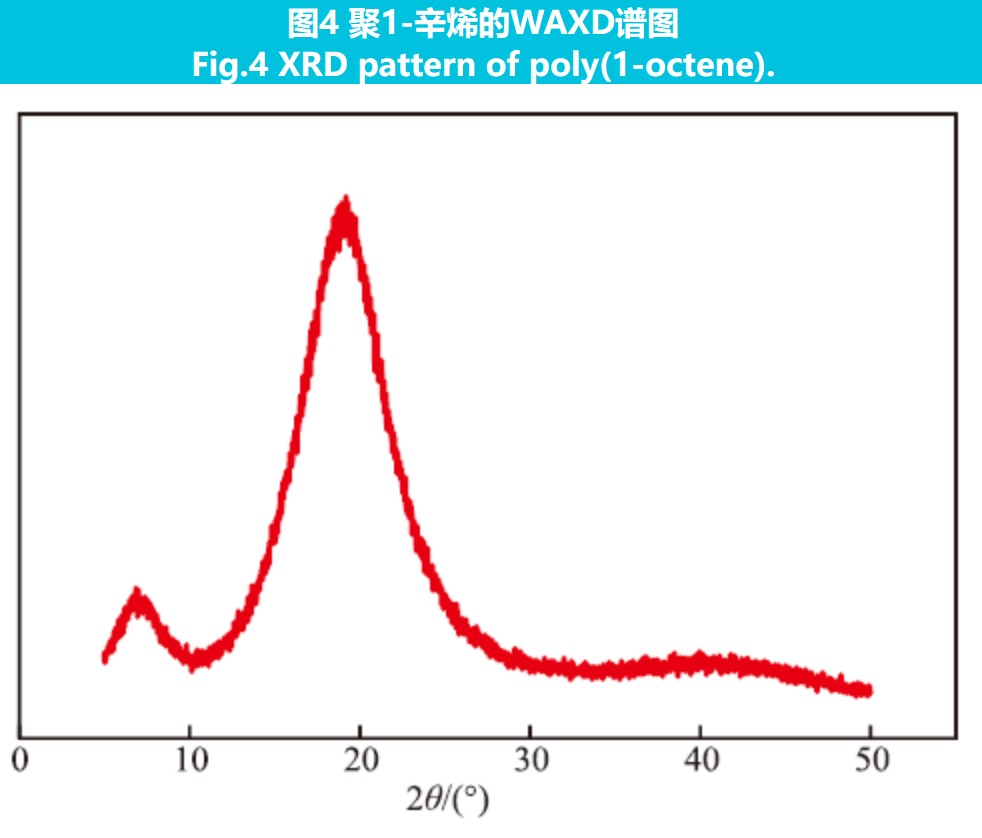Case Studies
Case Studies
- The Application Prospects of DeepSeek Large Model in Petroleum Engineering(Part 1)
- The Application Prospects of DeepSeek Large Model in Petroleum Engineering(Part 2)
- Development and Performance Evaluation of Efficient Asphalt Dispersant (Part 1)
- Development and Performance Evaluation of Efficient Asphalt Dispersant (Part 2)
- Development and Performance Evaluation of Efficient Asphalt Dispersant (Part 3)
- Research and Application Status of Drilling Fluid Plugging Materials (Part 1)
- Research and Application Status of Drilling Fluid Plugging Materials (Part 2)
- Research and Application Status of Drilling Fluid Plugging Materials (Part 3)
- Application and Exploration of Intelligent Technology for carbon dioxide transportation pipelines under the dual carbon background(Part 1)
- Application and Exploration of Intelligent Technology for carbon dioxide transportation pipelines under the dual carbon background(Part 2)
The 13C NMR spectrum of poly (1-octene) is shown in Figure 3.
From Figure 3, it can be seen that δ=41.2, 35.8, 33.3, 32.5, 30.5, 27.4, 23.2, and 14.2 respectively correspond to the signal peaks of carbon atoms 1 # to 8 # on the poly (1-octene) molecular chain, which are the "head-tail" connected polymer molecular chain signal peaks of 1-octene. There is no signal peak at δ=39.5, indicating the absence of two directly connected methylene groups formed by the "head-head" connection of the main chain. The signal peak of carbon atom 6 has not split into two signal peaks, δ=27.4 and 27.6, indicating the absence of two directly connected methylene groups formed by the "tail-tail" connection. There is no signal peak corresponding to the C=C bond, indicating that the double bond content in the obtained poly (1-octene) molecular chain can be ignored.

2.3.3 WAXD Analysis
The WAXD spectrum of poly (1-octene) hot pressed film is shown in Figure 4.
From Figure 4, it can be seen that the two broad peaks appearing near 2θ=7 ° and 20 ° are characteristic diffraction peaks of poly (1-octene). No sharp diffraction peaks were observed, indicating that the poly (1-octene) synthesized by Cat. 4 has an amorphous structure and is not crystalline. Poly (1-octene) with amorphous structure is more easily soluble in oil products as a drag reducing agent for pipeline transportation, making it easier to handle.

2.4 Analysis of Drag Reduction Effect
According to the method specified in SY/T 6578-2016, drag reduction performance testing was conducted using an indoor testing loop. Before testing the drag reducing polymer solution, the pressure drop caused by friction when 0 # diesel oil flows through the pipeline at the same temperature was measured.
0 # diesel with 5 mg/kg drag reducing agent was subjected to drag reduction testing on the same pipeline, and the pressure drop was obtained. The drag reduction rate (DR) was calculated using below formula.

In the formula, Δp0 is the frictional pressure drop of the pipeline section under basic testing conditions, kPa;
ΔpDRA is the frictional pressure drop of the pipe section under the test conditions of drag reduction rate, kPa.
The calculation results show that the drag reduction rate of the poly (1-octene) prepared in this work is 46.9%. Under the same conditions, several domestic drag reducing agents were tested for drag reduction rates, with the highest drag reduction rate being 43.5%; The drag reducing agent Liquid Power from Conoco Corporation in the United States has a drag reduction rate of 47.2%. This indicates that the drag reducing agent prepared by the Cat.4/MAO system has a drag reducing effect comparable to Liquid Power products.
3. Conclusion
1) . Introducing aryloxy groups containing F substituents into the active component TiCl4 can regulate the electronic effects and coordination environment around Ti atoms, thereby improving the stability of the catalyst's active center. Preferably, Cat. 4 containing 2,6-difluorophenoxy groups catalyzes the polymerization of 1-octene to obtain ultra-high molecular weight polymers.
2) . The suitable conditions for catalytic polymerization of 1-octene using the Cat.4/MAO system are: the first stage polymerization temperature is 0 ℃, and the polymerization time is 24 hours; In the second stage, the polymerization temperature is 5 ℃ and the polymerization time is 144 hours; n(Al):n(Ti)=50:1, n(1-octene):n(Ti)=2000:1. Under this condition, the monomer conversion rate is 96.9%, and the Mη of poly (1-octene) is as high as 3.55×106.
3) . The poly (1-octene) obtained from the experiment has an amorphous structure and is easily soluble in oil, with a drag reduction rate of 46.9%, which is superior to other oil soluble drag reducing agents in China and has comparable performance to imported products.
4) . The catalyst preparation and 1-octene polymerization were carried out at mild temperature and atmospheric pressure, the cost is low. Moreover, there is no production or emission of CO2 during the treatment and use of poly (1-octene) as a drag reducing agent, which is in line with the national dual carbon strategy goals.



